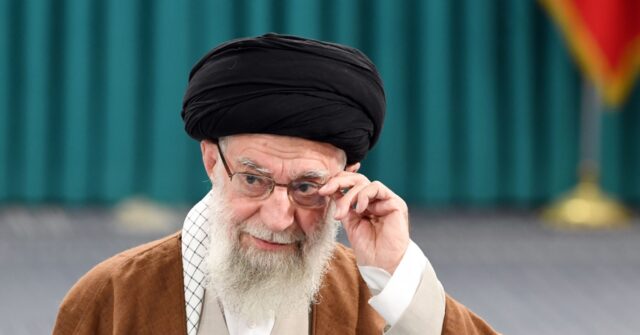In late October, tensions between Israel and Iran reached a new peak following Israeli military strikes on Iranian military sites. Iran’s Supreme Leader, Ayatollah Ali Khamenei, responded sternly, promising “teeth-breaking” retaliation against both Israel and the United States for their actions. This declaration came during Khamenei’s address to a group of students, where he emphasized Iran’s readiness to counter any perceived aggression. He highlighted the nation’s commitment to fortifying its military capabilities as well as its political strategies to confront what he terms the “arrogance” of adversaries, hinting at a broader resolve among Iranian leadership to amplify their defense posture in response to the growing hostilities.
Khamenei’s statements were echoed by Major General Hossein Salami, commander of the Islamic Revolutionary Guard Corps (IRGC), who claimed that Iran’s potential retaliation would exceed expectations. This rhetoric follows a long-standing pattern of threats directed at Israel, raising concerns about the possibility of a broader conflict. Meanwhile, IRGC deputy commander Brigadier General Ali Fadavi assured that Iran possesses the capability to target Israeli assets effectively and with precision, suggesting that Tehran is bolstering its offensive capabilities. However, specific details about Iran’s intended response or plans to enhance its military resources, including missile production, remain undisclosed, leaving analysts to speculate about the potential implications of these threats.
The immediate conflict escalated after an earlier missile strike from Iran against Israel on October 1, which, although minimally damaging, prompted Israel to retaliate decisively on October 25. This series of exchanges marks a significant uptick in hostilities between the two nations, both of which have been embroiled in a prolonged proxy conflict across the Middle East. The mounting aggression prompted a strengthening of military support from the United States, indicative of the potential for further escalation in the region. In response to the situation, the Pentagon announced the deployment of additional military assets to bolster American presence in the area, raising alerts on the possible need for increased preparedness among U.S. forces.
To strengthen its military readiness, the U.S. is sending ballistic missile defense destroyers, a squadron of fighter aircraft, and long-range B-52 bombers to the Middle East. The Pentagon’s Press Secretary, Major General Pat Ryder, emphasized that these forces are set to arrive in a phased approach over the coming months, coinciding with the preparations for the USS Abraham Lincoln carrier strike group’s deployment. The strategic military maneuvers underscore the U.S. commitment to maintaining stability in a volatile region while also indicating a readiness to respond to any escalations stemming from Iran’s threats against U.S. interests and allies in the area.
Moreover, the Pentagon revealed its decision to place a Terminal High-Altitude Area Defense missile system in Israel, ensuring that Israeli forces are equipped to counter missile threats more effectively. The sustained presence of an Amphibious Ready Group Marine Expeditionary Unit in the Eastern Mediterranean further demonstrates the U.S. strategy of flexibility and readiness in responding to evolving national security threats in a region characterized by unpredictability and tension. U.S. officials highlight that these deployments reinforce America’s global defense posture and showcase its capabilities to respond promptly to crises as they develop.
As the conflict intensifies, the likelihood of further confrontations between Israel and Iran grows. Given the current trajectory of military posturing and rhetoric, regional stability appears increasingly precarious, with both nations potentially on a collision course that could have broad implications for Middle Eastern geopolitics. The U.S. finds itself positioned as a key ally for Israel, as well as a counterweight to Iranian aggression, and the unfolding circumstances warrant close monitoring, with possible ramifications that extend beyond the immediate region into wider international relations.

